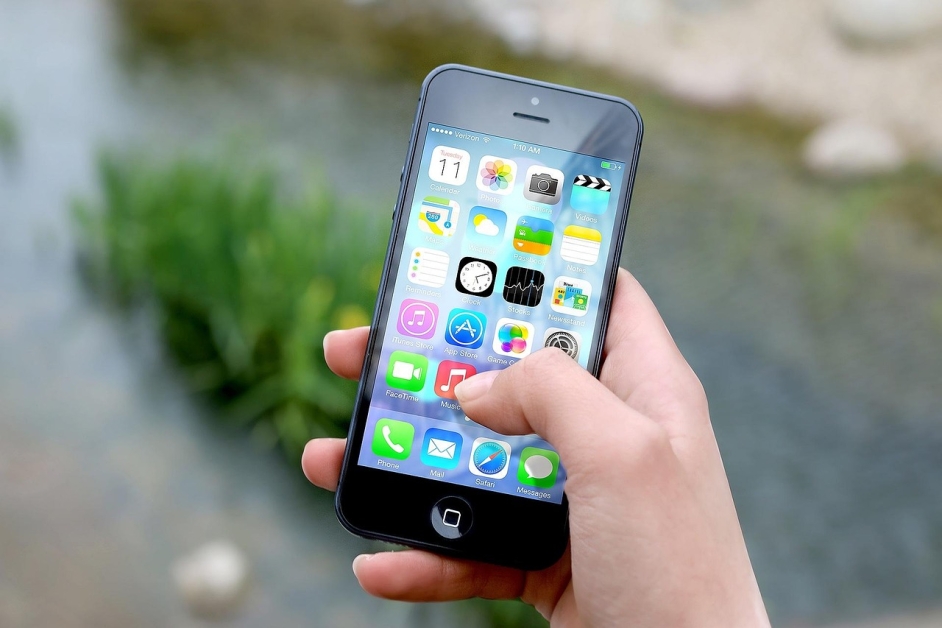
Unlocking Hidden Features in Smartphones
Most people think budget smartphones only cover the basics, but there’s much more just under the surface. Packed into these affordable devices are smart features and rich extras that few users ever spot, much less use. These hidden tools can help you do more. They allow you to personalize your phone. You can even get better photos and battery life without spending extra money.
If you own a budget smartphone, you’re sitting on untapped potential. This post shines a light on overlooked options and practical tricks that can make your phone feel brand new. Get ready to unlock real value and make the most of what you already have in your pocket.
Hidden Gems in Everyday Smartphone Settings
Budget smartphones often hide their best features just below the surface. While most users focus on the basics, a few extra taps can unlock a deeper level of control and personal security. Here’s how you can harness some of the most overlooked settings to make your budget phone smarter, safer, and more personal.
Unlocking Developer Options: A Hidden Control Room

Few settings match the depth and power of Developer Options. It’s a hidden panel that feels like you’ve found a secret room just for tech enthusiasts but is open to anyone willing to look. Most users never bother because it’s not easily visible on the main settings screen.
To enable Developer Options:
- Open your phone’s Settings app.
- Scroll down and select About Phone.
- Find Build Number and tap it seven times in a row. You’ll see a message confirming “You are now a developer!”
With this menu unlocked, you gain tools that can:
- Speed things up: Reduce system animation scales (Window, Transition, Animator duration). This adjustment makes apps open and close faster. It makes your budget phone feel more responsive.
- Improve performance: Use options like “Limit background processes” to stop unused apps from dragging your phone down.
- Debug like a pro: USB debugging lets your phone communicate with your computer for direct file transfers or app testing. Handy for troubleshooting or tinkering with advanced tools.
- See the unseen: Toggle on options to show taps or visual feedback. You can even toggle GPU rendering for a peek under the hood.
Why do most people ignore Developer Options? They assume it’s only for experts or fear they might break something. In reality, many tweaks are safe if you avoid settings you don’t understand. It’s like discovering gears behind a clock; fascinating and handy when you want fine-tuned control.
Screen Pinning for Privacy and Peace of Mind
Ever handed your iPhone to a friend or child and worried they will wander into your photo album or messages? Screen Pinning is your invisible guardrail.
This feature locks your phone to one app, blocking the rest of your data until you unlock the device. On most budget Android phones, activating it is simple:
- Go to Settings > Security (sometimes found under Advanced settings).
- Look for Screen Pinning or App Pinning and turn it on.
- Open the recent apps menu, tap the app icon, then choose Pin.
A few examples where screen pinning shines:
- Handing your phone to a child for a game without opening other apps.
- Letting someone make a call without seeing your call logs or contacts.
- Showing photos without letting others scroll into unrelated images.
To unpin, hold both the back and recent apps buttons. This combo may vary by phone. Enter your passcode if prompted. Simple, effective, and barely used.
Smart Lock and Medical Info: Security with a Human Touch
Modern Android phones offer more than just passwords or fingerprints for security. Smart Lock and Medical Info features add a personal, even life-saving, touch.
Smart Lock can keep your device unlocked in trusted situations. You don’t waste time with PINs at home. This also applies while wearing your smartwatch. Set it up by going to Settings > Security > Smart Lock. You’ll find options like:
- Trusted places: Your phone stays unlocked at home or work.
- Trusted devices: Keep it open when connected to your car’s Bluetooth or a favorite watch.
- On-body detection: Stays unlocked while it senses being carried.
Less obvious but just as important is Medical Info on your lock screen. Found under Settings > About Phone > Emergency Information, it lets you:
- Add allergies, blood type, or medical conditions.
- List emergency contacts so first responders can help, even if your phone is locked.
- Show vital info on the lock screen with one swipe up and tap Emergency.
These features offer a blend of smart convenience and real-world protection. Most users overlook them, but they can make everyday interactions safer and even help in a crisis.
You don’t need to be a tech expert to make your budget phone work smarter for you. Just a few minutes in these hidden menus can unlock security, speed, and peace of mind.
Maximizing Multitasking and Productivity
Budget smartphones may look simple, but they’re packed with features. These features help you stay focused. They also allow you to get more done in less time. These tools often hide in plain sight. They wait for curious users to find them. Once discovered, they unlock whole new levels of convenience. Let’s utilize some of these overlooked options. Your pocket-sized tech can then stand tall against even the most expensive models.
Split-Screen and Pop-Up View: Do More at Once
Think you need a flagship phone to multitask? Think again. Most budget Android phones have built-in split-screen and pop-up view modes. These features let you run two apps at once. It’s just like having two mini windows side-by-side or floating on top of each other.
How split-screen works:
- Open your recent apps by tapping the multitask button or swiping up from the bottom.
- Tap the icon of the app you want up top. Pick Open in split screen. Then choose a second app for the bottom half.
- Drag the middle bar to give one app more space if you need it.
Pop-up view turns any app into a floating window you can resize or move around. For example, you might watch a video in a pop-up while scrolling social media or responding to messages. It’s perfect for quick notes, chats, or watching instructions while you follow along.
Some phones, especially those by Samsung and Xiaomi, add extra tools like:
- Edge panels: Quick-draw app panels for launching split-screen pairs.
- Pre-set app pairs: Instantly open your favorite combos (like maps and music) together.
- Floating notifications: Keep up with chats without leaving your current app.
These multitasking tricks aren’t just parlor tricks. Imagine:
- Comparing data from two apps without switching back and forth.
- Copying info from your email straight into your calendar.
- Watching a how-to video while following steps in another app.
With a little practice, your budget phone becomes more like a pocket laptop.
Quick Network Sharing: Wi-Fi via QR and Nearby Share
Tired of sharing Wi-Fi passwords by yelling across the room or typing long codes? Today’s phones include simple ways to share your network or files quickly, securely, and without fuss.
Wi-Fi sharing via QR code is especially handy when friends come over:
- Go to your Wi-Fi settings, tap your connected network, and select Share.
- Your phone displays a QR code.
- Others just point their camera at your screen, and they’re instantly connected—no passwords, no typos.
Nearby Share is Google’s answer to AirDrop and works on most modern Android phones, even many budget ones. This lets you send photos, files, links, or even entire folders to people nearby with a few taps.
Here’s why these sharing tools stand out:
- Fast: Transfers happen almost instantly, even for large files, using a mix of Bluetooth and Wi-Fi.
- Private: You control who can see your device and send you files. Transfers require your approval, so there’s no spam.
- Flexible: Works with Android devices within about 16 feet. For Wi-Fi QR, all you need is the camera—no extra apps.
Sharing your Wi-Fi or files becomes as easy as passing a note between friends, except much more secure and private. Next time someone asks for your password, just say, “Point your camera here.” That’s one less interruption and one more reason to smile at your budget phone’s hidden talents.
Boosting Performance and Battery Life
Even budget smartphones in 2025 come with the muscle to handle busy days, but small tweaks can take your device further. A few minutes adjusting hidden settings can mean faster multitasking, fewer slow-downs, and hours of extra screen time. Here are key features hiding in plain sight that give your phone that secret boost, making the most of both battery and speed.
Adjust Screen Resolution and Refresh Rate: Where to Find Powerful Screen Optimizations
Most modern Android phones let you change the screen’s sharpness. You can also adjust the resolution. Furthermore, they allow you to change how many times it refreshes per second, which is the refresh rate. These controls shape both how your phone looks and how long it keeps running.
You can find these settings in a snap:
- Open Settings.
- Tap Display.
- Look for “Screen resolution” and “Refresh rate” (sometimes called “Motion smoothness” or “Smooth Display”).
- Some devices tuck these under Advanced display settings.
Lowering your screen resolution from crisp “QHD+” or “FHD+” to basic HD means each app and photo might look a touch less sharp, but your phone uses less power to do the same job. Reducing the refresh rate from a super-smooth 120Hz or 90Hz down to 60Hz helps even more. High refresh rates look great for gaming and scrolling, but they can drain the battery faster, especially on budget devices.
Many phones now offer adaptive refresh rate modes. When you turn this on, your phone will raise the refresh rate for scrolling or games, then drop it down when you’re reading static text or watching video. This helps squeeze out extra hours of life without forcing you to choose between a smooth look and lasting battery.
Here’s why these tweaks are worth a look:
- Longer battery life: Lower settings mean fewer power-hungry pixels and less work for the processor.
- Cooler phone: Less strain means your device runs cooler, even when binge-watching or group-chatting for hours.
- Smoother performance: Some budget chips handle lower refresh rates better, so navigation feels snappier and less laggy.
Try dropping both resolution and refresh rate, even for a single charge cycle. Most users notice steady speed and at least an hour of extra use, making the change more than worth it—especially if you’re out and about.
Restricting Background Data and App Activity: Simple Ways to Stretch More Minutes
Your phone is always busy, even when you aren’t staring at the screen. Many apps run in the background, chewing up data, battery, and even slowing down your system. Taming them instantly gives you a lighter, longer-lasting device—no extra apps or deep tech knowledge needed.
Head to these settings on almost any Android:
- Open Settings.
- Tap Network & internet (or Connections).
- Tap Data usage.
- Check Background data or “Apps using background data.”
Here are quick steps you can take right now:
- Toggle Off background data for apps you rarely open.
- In Settings > Apps, choose an app, then tap Battery to set it as “Restricted” or “Optimized.”
- For heavy hitters like social media or shopping apps, switch on Data Saver mode. This blocks unused apps from sneaking online unless you open them.
What happens when you shut down background data and activity?
- Battery boost: Apps that aren’t allowed to wake up and sync use far less energy.
- More speed: Your processor isn’t wasting time keeping countless apps “alive” in the background.
- Lower data bills: No surprise charges from photo backups or auto-play videos while you’re on cellular.
Most people leave these switches alone, thinking their phone “must know best.” In reality, the average user has dozens of apps running background processes they rarely need. Testing these features for just a day can help you spot which apps actually matter and which are just quietly draining power.
Tuning these hidden controls is like closing the windows in a house to keep the heat in. You don’t lose comfort—you just keep energy where it counts, making that budget phone punch above its weight.
Secrets for Safety and Personalization
Your budget smartphone comes packed with safety systems and personalization tricks you’re probably not using. These hidden features let your phone step up when you need help, and they let you put your own signature on daily interactions. Let’s highlight three categories that can make your budget device safer, smarter, and truly yours, with real examples you can start using today.
Emergency SOS and Built-In Safety Tools
Most current budget phones quietly offer a suite of life-saving options, not just for accidents and emergencies but also for everyday peace of mind. With emergency SOS tools, even affordable models now pack features you’d expect only on high-end devices.
Here’s what you can often enable with a quick setup:
- Emergency SOS: Pressing your power button three or five times quickly (depending on your model) sends your live location to emergency contacts and, where supported, local rescue services. Some phones even allow sending a short audio or video recording.
- Fall Detection: Phones like the Moto G Power 5G and Samsung Galaxy A15 5G now alert contacts if they detect a hard fall, useful for older adults or anyone living alone.
- Satellite SOS Messaging: High-end only a year ago, this is now rolling out to models like the Pixel 9a when you’re off the grid. It lets you message emergency responders even with no cell coverage, as long as you have open sky.
- Lock Screen Medical Info: Store your allergies, medications, and emergency contacts so first responders see them without unlocking your phone.
Setting up takes just minutes:
- In your Settings app, search for “Emergency SOS,” “Safety,” or “Medical Info.”
- Follow prompts to add contacts, enter health info, and turn on fall detection if available.
- Practice initiating SOS with your power button, so you know it’ll work when you need it.
It pays to prepare before disaster strikes. Spend a few minutes now so your phone has your back later.
Customizing Notifications and Controls
A phone doesn’t feel personal until it acts the way you want. Personalization options in notifications and controls make the difference between a phone that nags and a phone that works for you.
Start with these straightforward customizations:
- Notification Channels: Control which apps and even which kinds of alerts show up, and how. Mute noisy apps, prioritize favorites, or let only calls or texts break through.
- Custom Sounds for Contacts and Apps: Assign distinct ringtones or alert tones
Conclusion
Budget smartphones are surprisingly powerful, loaded with smart features waiting to be found. Tweaking a few hidden settings or trying tools like screen pinning or adaptive battery modes can make your device feel sharper, safer, and more personal—even compared to top-tier phones.
Taking a few minutes to test these features can breathe new life into what you already own. Your pocket tech has secrets that can save time, protect privacy, and add a personal touch unique to you.
Experiment, explore, and you might be surprised by what your phone can actually do. Share your favorite discoveries or tips below so everyone can get more from their devices. Thanks for reading and using your phone’s hidden talents to make each day a little brighter.



